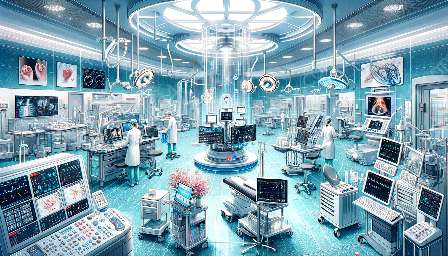Medical radiation therapy is a vital component of modern healthcare, enabling the treatment and management of various conditions, particularly cancer. The integration of biophysics with medical radiation therapy has significantly advanced the efficacy and precision of treatment. This integration has facilitated meaningful developments in medical devices that play a crucial role in delivering targeted and personalized care to patients.
Understanding the Role of Biophysics in Medical Radiation Therapy
Biophysics is the application of physical principles to biological systems. In the context of medical radiation therapy, biophysics plays a key role in understanding the interactions between radiation and living tissues at the cellular and molecular levels. By delving into the fundamental mechanisms of radiation-induced biological effects, biophysics provides valuable insights for optimizing treatment protocols and minimizing adverse effects on healthy tissues.
Biophysical studies have led to the development of advanced treatment planning algorithms and techniques that leverage the principles of radiation physics to precisely target tumors while sparing surrounding healthy tissues. This has led to improved treatment outcomes and reduced treatment-associated toxicities, enhancing the overall quality of patient care.
Biophysics-Driven Innovation in Medical Devices
The fusion of biophysics with medical radiation therapy has spurred the innovation of cutting-edge medical devices that are reshaping the landscape of cancer treatment. One such example is the development of sophisticated radiation delivery systems that incorporate biophysical principles to precisely administer radiation therapy with unparalleled accuracy and control.
These innovative devices often integrate advanced imaging technologies, such as positron emission tomography (PET) and computed tomography (CT), to visually guide radiation beams to the targeted areas within the body. By harnessing the principles of biophysics, these devices enable clinicians to tailor treatment plans based on individual patient anatomy and tumor characteristics, thereby optimizing therapeutic outcomes.
Advancing Patient-Centric Care Through Biophysics and Medical Devices
Biophysics-driven advancements in medical devices have ushered in an era of patient-centric care, where treatment strategies are meticulously tailored to each patient's unique biological and physiological profile. By leveraging biophysical insights, clinicians can optimize radiation therapy regimens to deliver maximum therapeutic impact while minimizing the impact on healthy tissues.
Furthermore, the integration of biophysics with medical devices has fostered the development of adaptive radiation therapy systems that dynamically adjust treatment parameters based on real-time anatomical changes, ensuring precise delivery of radiation doses throughout the course of treatment.
Future Horizons: Biophysics, Medical Devices, and Personalized Treatment
The convergence of biophysics, medical radiation therapy, and innovative medical devices holds immense promise for the future of cancer treatment. As research continues to unravel the intricacies of biological responses to radiation, the development of next-generation medical devices will be instrumental in delivering personalized treatment regimens that account for the individual variability in patient responses.
By harnessing the power of biophysics, these future medical devices are poised to revolutionize radiation therapy by offering enhanced precision, improved treatment outcomes, and minimized adverse effects, thereby shaping a new era of personalized and targeted cancer care.


